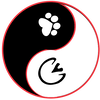|
Anhidrosis is a common problem in sport horses training and competing in hot humid conditions. Horses reduce their body temperature during exercise mostly by sweating. As sweat evaporates from the body surface, the body heat is reduced. They can also dissipate heat by respiration. Cool air enters the lungs and cools the blood flowing to the muscles and hot air is exhaled. During hot and humid conditions, the rate of evaporation of sweat is reduced and breathing in hot, humid air does little to cool the blood. The horse's coat is also a great insulator and can act like a wet suit keeping a layer of heat next to the skin if the sweat is slow to evaporate or is not scraped off. Sometimes it is difficult to know if your horse is sweating enough. Some early signs may be reluctance to work, panting, sweating only under tack or a sticky dry coat. Some horses sweat more than normal in the months before they stop sweating. Horses with concurrent lung disease like heaves are at a greater risk of heat stroke because they have limited ability to cool themselves by respiration. The sweat glands are highly innervated and are stimulated by the sympathetic nervous system (fight or flight response). The mechanism of anhidrosis in horses has not been determined but In chronic cases, the sweat glands are atrophied, suggesting multiple bouts of heat stroke may lead to more severe symptoms over time. In people, some causes have included congenital, metabolic and autoimmune diseases, skin damage and drug induced causes. In TCVM, the Heart controls the sweat glands and the Lung controls the exterior of the body and the Wei Qi (immune system). The balance between Yin and Yang control the body temperature. The Yin is like the air conditioner while the Yang is like the furnace. Summer Heat is one of the 6 pathogens in TCVM and can damage the Heart and Lung Yin so we view anhidrosis as a Heart and Lung Yin deficiency. Treatment principles in TCVM include acupuncture, herbal and food therapy in addition to environmental modification like monitoring body temperature during exercise, working in cooler weather, taking frequent breaks in the shade, and cooling with water and scraping to help speed evaporation. During pasture and stall time, horses should always have access to shade, fans, salt, electrolytes and cool fresh water. The NOAA heat index chart can help you determine when it is unsafe to work your horse if he is prone to anhidrosis. In south Florida, we are in the extreme caution zone for most of the summer. Due to our high humidity, even in the early morning or late evening. You may have to be vigilant about cooling before, during and after your horse's work out or you may choose to give them some time off during the summer. Herbal therapy in combination with acupuncture has shown great promise in helping non-sweaters. Our recommendation is to start treatment in the late spring and continue through the summer until the heat index consistently falls below 90. This could include acupuncture once per month plus herbal and food therapy daily. New Xiang Ru San is Dr. Xie's Herbal Formula made specifically for horses with anhidrosis. It contains a blend of Bian Dou (hyacinth bean), Xiang Ru (mosla), Hou Po (magnolia bark), Lian Qiao (forsythia) and Jin Yin Hua (honeysuckle flower). Food therapy includes cooling foods to tonify the Heart Yin and pungent foods that tonify the Lung and increase sweating. A variety of foods from this list can be added to the horse's diet as treats or mixed into the feed. You can also check out our recipe for "green tea" ice pops on the feeding seasonally blog post. Alfalfa Dark Malt based beer (Guiness) Cucumber Celery Chia Seeds Kombu (Kelp) Spirulina Lemon Watercress Yam Lettuce Peppermint Radish Aloe Listen in to the new Driving Radio Show on Horses in the Morning for more TCVM info ! This month our Tremont training tip from Keady Cadwell is how to teach your horse to drive safely in a group, Katie Whaley recaps the Lexington Carriage Classic at the Kentucky Horse Park and Abbie Trexler has some great news about the new ADS vest rule. Plus in the TCVM update, Dr. Wendy talks about non-sweating and managing your horse through the summer heat.
2 Comments
ABSTRACT
Abstract of Thesis Presented to the Master Program of the Chi Institute in Partial Fulfillment of the Requirements for the Degree of Master of Science DETERMINING THE EFFECT OF LASER ACUPUNCTURE ON THE HEART RATE OF ACUTE-STRESSED HORSES By WENDY YING, DVM, TCVMP, CCRT AUG 2016 Committee Members Sam Wu, PhD Huisheng Xie, DVM, PhD Aituan Ma, MS, PhD Anxiety in horses affects performance, health and value of sport horses and the reputation of trainers and competitors. Current treatments include behavior modification with pharmaceuticals, acupuncture, herbal supplements, mineral supplements and food therapy. We propose laser acupuncture, given before stressful situations can decrease anxiety and improve performance and health in horses. A 2 day cross over study was performed on 24 horses who were either assigned to the treatment or control group on Day 1. Treatment horses were given laser acupuncture to reduce anxiety. Control horses were given sham treatment with the laser in the off position. All horses were fitted with a heart rate monitor and then exposed to an acute startle test (AST). Heart rate was monitored 1 minute pre and 10 minutes post AST. Peak HR and return to Baseline HR was noted. All horses were allowed a wash out period of 7 days and then assigned to the other group and results from both days were compared. 22 geldings and 2 mares ranging in age from 6 yrs to 29 yr were used. Breeds included Arabians, Quarter Horses, Warmbloods, Tennessee Walking Horses and grade horses. Disciplines included Jumpers, Hunters, Dressage, Driving, Fox hunting and Trail. Our data shows in some cases, laser acupuncture did reduce peak heart rate and decreased the time to return to baseline. Further research needs to be done with a larger group of subjects. Modifying the acute startle test depending on the level of anxiety of the breed/discipline may give more meaningful results. Quarter Horses, trail and driving horses showed a very low level of startle (ie lower peak heart rate) compared to dressage horses and jumpers probably due to their exposure to loud noises in their daily activity. This model may be used to test the effectiveness of other kinds of acupuncture treatments, herbal therapies, pharmaceuticals and supplements claiming to be effective in controlling anxiety in horses and other animals. Archeologists determined that Neolithic man, 8000 years ago used a primitive type of acupuncture tool called the bian-shi. It is a pyramidal shaped stone used to lance boils and stimulate certain points on the body to relieve pain. Later a sharp piece of bone was used for the same purpose and during the Shang Dynasty (1600 BC to 1100 BC), the metal acupuncture needle was invented. As they tracked their clinical results, they discovered acupoints with similar functions formed a line on the body and the sensation of the de - Qi would follow a certain pathway...a meridian or Jing-Luo.
There are 12 paired regular channels that relate to the organs and 8 extraordinary channels, 2 of which follow the midline. The Governing vessel on the dorsal midline and Conception vessel on the ventral midline. There are also collateral and divergent channels that are smaller branches of the major meridians that link the organs and meridians to one and other to form an intricately connected pathway throughout the body. I use 3 kinds of acupuncture in my practice : dry needle, electro and aqua acupuncture. Dry needle is simple insertion of small acupuncture needles. During electro acupuncture, the needles are connected to a battery powered stimulator to deliver a painless low voltage current to the meridian. For Aqua acupuncture, I inject a small volume of vit b 12 or glucosamine into the point. This causes a small blister and gives continual stimulation over a few days. Archived from 5elements4animals.com
originally posted on Jan 5, 2011 Acheologists determined that Neolithic man, 8000 years ago used a primitive type of acupuncture tool called the bian-shi. It is a pyramidal shaped stone used to lance boils and stimulate certain points on the body to relieve pain. Later a sharp piece of bone was used for the same purpose and during the Shang Dynasty (1600 BC to 1100 BC), the metal acupuncture needle was invented. As they tracked their clinical results, they discovered acupoints with similar functions formed a line on the body and the sensation of the de - Qi would follow a certain pathway...a meridian or Jing-Luo. There are 12 paired regular channels that relate to the organs and 8 extraordinary channels, 2 of which follow the midline. The Governing vessel on the dorsal midline and Conception vessel on the ventral midline. There are also collateral and divergent channels that are smaller branches of the major meridians that link the organs and meridians to one and other to form an intricately connected pathway throughout the body. You may have heard acupoints called different names by different practitioners. This is because we have several ways of naming the points. The Traditional nomenclature system is based on the location on the body, its corresponding organ, its therapeutic effect or a symbolic meaning. Some examples are Er - jian = tip of ear, Wei-shu = stomach association point, Jing-Ming = Brighten the eye, or Da-feng-men = great wind gate - which releases wind (seizure, itching, ect). The western nomenclature system names the meridian and the location on the meridian, for example, BL 1 is the 1st point on the bladder meridian. HT 9 is the 9th or last point on the heart meridian. In veterinary medicine, some of the points are transpositional, meaning we have changed the location slightly to get the desired result but have to use a different anatomic point because of anatomical differences, ie horses only have 1 finger/toe, we cut off the thumb and big toe of the dog (dew claws), people don't have tails and obviously Bl 67, on the little toe, the last point on the bladder meridian will be in a different place on a dolphin or snake. Archived from 5elements4animals.com
originally posted on Jan 11, 2011 What are meridians & what is their function ? The meridians transport qi,blood & nourishment throughout the body. In 400 bc, the ancients had no idea about the krebs cycle, the immune system, nerve conduction or lymphatic drainage. By observation, they realized that fluids & electrical impulses flowed throughout the body with supplementation from the external environment and this was necessary for life of all living things. The meridians also connect the organs & maintain homeostasis. How do our bodies maintain a constant temperature, maintain balance, how does our endocrine and immune system work ? We tend not to ponder these questions until we have a fever, get bedspins, suffer from diabetes or get a bee sting or fight off the flu. These questions have been answered relatively recently but practioners have been treating disease based on observations for thousands of years. If the bodies defenses become weak, the external invaders can use the meridians to transmit disease. For example, a particle of flu virus lands on your mucous membranes, enters your blood stream & replicates in your lungs & lymph nodes. The meridians also reflect the symptoms of disease which is how practitioners can make a diagnosis. For example, liver heat can manifest as yellowing of the sclera/jaundice and the eyes are associated with the liver. The meridians transport the therapeutic effects of herbal therapy & acupuncture. The arrival of the de qi is the reaction of the body to acupuncture. The de qi effect can feel like heat, tingling, pain or heaviness. Human patients can tell the dr what he feels. We vets look for muscle twitching or slight changes in behavior in our animal patients. The de qi response results in a release of endorphins, the bodies endogenous pain killers & muscle relaxers. I use 3 kinds of acupuncture in my practice : dry needle, electro and aqua acupuncture. Dry needle is simple insertion of small acupuncture needles. During electro acupuncture, the needles are connected to a battery powered stimulator to deliver a painless low voltage current to the meridian. For Aqua acupuncture, I inject a small volume of vit b 12 or glucosamine into the point. This causes a small blister and gives continual stimulation over a few days. |
�
Dr. WendyPractices Traditional Chinese Veterinary Medicine in Sarasota, Florida Categories
All
Archives
December 2023
|
|

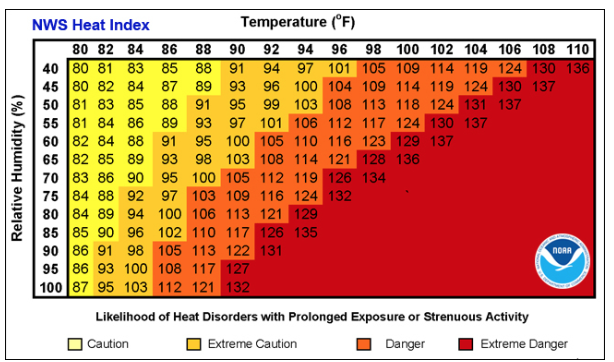


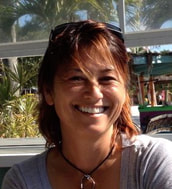
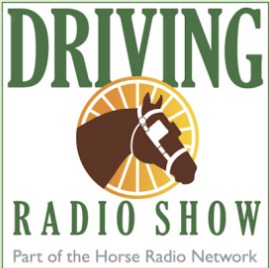
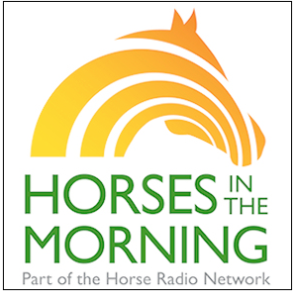
 RSS Feed
RSS Feed

